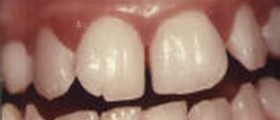
Internal Bleeding OverviewInternal bleeding represents the bleeding that occurs inside the body. This usually results from damaged blood vessels when blood runs away from circulatory system and accumulates within the tissues, organs or cavities inside the body such as head, chest and abdomen. Internal bleeding may also occur inside the eyes, muscles and joints.
Internal bleeding is often hard to identify because there is no external manifestation of this condition especially in the beginning. Internal bleeding is usually recognized after considerable loss of blood that presents certain symptoms. Internal bleeding depends on severity of damage to an organ and blood vessels that are supplying blood to that organ. Also, the amount of bleeding is determined by the body’s ability to repair damages to the walls of an artery or veins. This is known as repair mechanism and includes blood clotting system and ability of blood vessels to contract and minimize the blood flow to the damaged area.
Some people have inherited poor blood clotting system which makes them prone to internal bleeding even because of minor injuries. Congenital bleeding disorders are, for instance, hemophilia and von Willebrand disease. Also, people who are taking anti-clotting drugs are more disposed to internal bleeding. Medications like warfarin, clopidogrel, heparin and Aspirin are blood thinners that are prescribed to reduce the risk of a blood clot forming which makes individuals who take them prone to significant bleeding even in case of minor injuries.
Signs and Symptoms of Internal BleedingSymptoms of internal bleeding depend on location of bleeding, amount of bleeding and structures and functions of the body that are affected. Intracranial bleeding occurs within the skull and it is caused by breaking of a blood vessel in the head. If it is a result of trauma or leaking aneurysm. It often causes pain and sometimes altered mental function. It is also associated with symptoms such as weakness, slurred speech and vision loss. If intracranial bleeding is not treated in time, the symptoms progress and become easily recognized.
Internal bleeding inside the abdominal cavity is usually hard to be recognized initially and the symptoms begin to appear when there is a great amount of lost blood. The symptoms of intra-abdominal bleeding are generally the pain, weakness, lightheadedness, shortness of breath and decrease of blood pressure. In case of gastrointestinal bleeding, affected person vomits blood or blood may appear like coffee grounds if the blood has been sitting in the stomach for longer period of time. Stool may also have traces of blood and may appear black and tarry. If bleeding occurs in peritoneum, a person may experience severe pain with any movement. Bruising is the sign of intra-abdominal bleeding.
Internal bleeding within the urinary tract will present symptoms such as blood in the urine. Bleedding into joints cause pain and inability to perform certain motions. Bleeding within muscles cause severe pain and loss of sensation.

















Your thoughts on this
Loading...